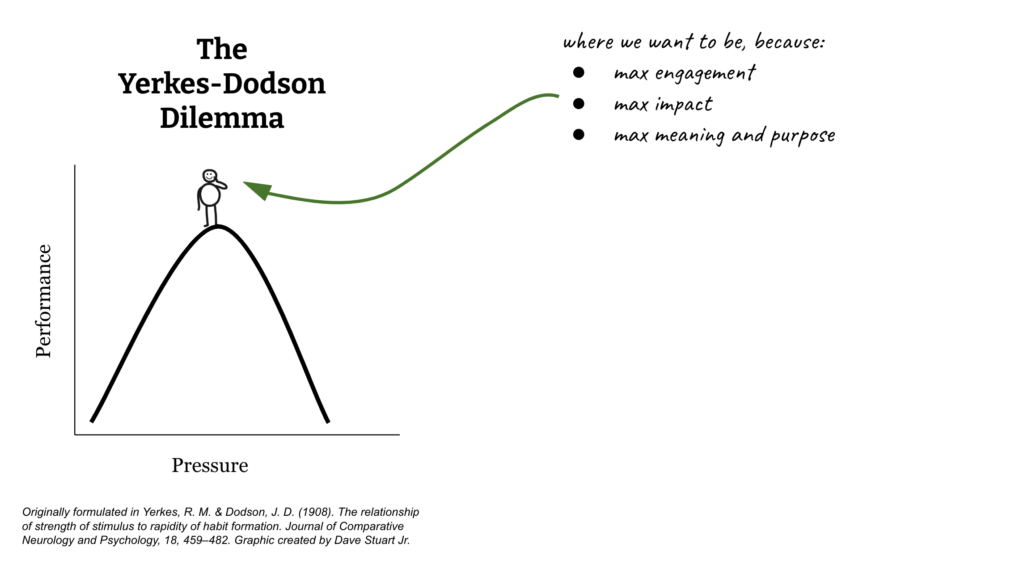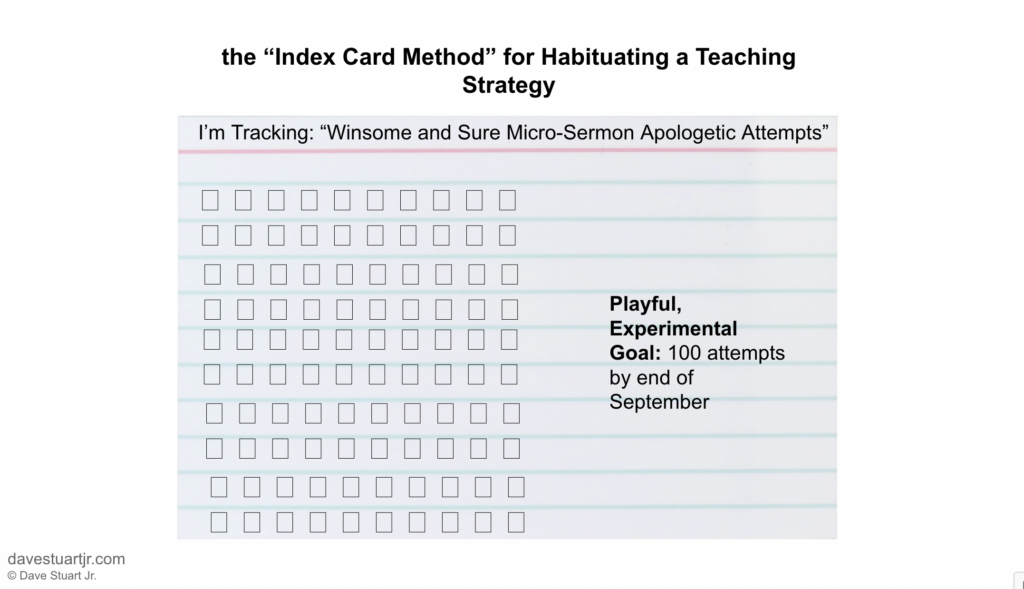Goal-setting: does it help or harm teacher motivation? This is an interesting problem to me.

From a Five Key Beliefs standpoint — which are as important to our teacher motivation as they are to our students' motivation — goal-setting helps with Efficacy. It does this by making success clear and measurable rather than generalized. (“Defining Success: Early, Wisely, Often” is one of the ten strategies I explore in my new book.)
However, the type of goal you set massively predicts whether it will help or hinder your motivation. And no, I'm not about to talk about SMART goals right now or WOOPing. While those are both important, they are not what's on my mind today when thinking about teacher goal-setting.
Instead, I'd like us to think about pressure for a moment.

As you may recall from a recent article, I think the Yerkes-Dodson Curve is a big deal for thinking about the work we do in schools. It posits, quite commonsensically, that a given human's performance hinges on that human experiencing an ideal degree of pressure — not too little and not too much.
When it comes to teacher goal-setting, then, I think it's critical to think in terms of your current pressure level.
If you're highly pressured, you want to set a “can't miss” goal that's basically totally up to you.
For me, this would be something like:
- Conduct eight pop-up debates between now and summer.
- Have a personal MGC with every student in the next two weeks.
- Give at least 100 30-second mini-sermons between now and summer.
I call these “can't miss” goals because whether or not I meet them is totally up to me and how I focus my time and energy. I am the locus of control. And each of these activities are self-reinforcing because they tend to feel good to me as a teacher. So, the more pop-up debates I have with students, the more I want to have more. The more MGCs I have with them, the more I want to do more. And so on.
Now on the other hand, if you're under-pressured in your job, you might think, “Okay, I need to set a moonshot goal — something that's really hard.” So for me, this would be a goal like a certain average score for my students on some kind of test or exam. In such a goal, the locus of control is shared between my students and me, with them having the lion's share of it.
But actually, I don't think this is the kind of goal that you need if you're under-pressured. I think you need the same kind of goal as you need when in the over-pressured condition.
Goals like this, at least in my experience, help me to keep in the right spot on the Yerkes-Dodson Curve rather than being like a pendulum swinging from side to side.
And, as a lovely side effect, I find that they also tend to lead to student achievement gains.
But the important thing, of course, is that you make sure that the actions you're tracking — in my example above, it was debates and MGCs and mini-sermons — are actually things that benefit from quantity and repetition. Some things are like this, other things aren't (e.g., in this article, Dan Willingham demonstrates the data on why teaching students a large quantity of reading comprehension skill lessons is actually a waste of time.)
So, as long as the work you're tracking is the right kind of work (my old and new books are both about that kind of work), let me encourage you to set a “can't miss” goal for your final weeks of teaching this year. Make sure you're tracking it in a prominent place where you'll see it. (I like using a clipboard or an index card [example below] that I keep on my teacher desk.) And as you go, observe what's happening in your heart. Are you becoming more motivated or less? Are you experiencing more pressure or less?

Best to you, colleague,
DSJR
Leave a Reply